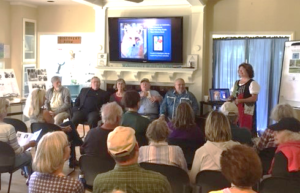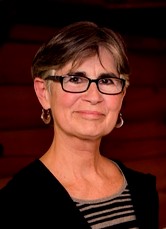DRP 2019 Environmental Heroes: Key Founders of the MNWR

1995 Key founders of the Mashpee NWR: Chuckie Green, Ed Moses, Christine Gault, Mark Forest, Tom Fudala (Sitting from right to left). Not present: Carl Melberg & Mary Varteresian
In 2019, as part of the National Estuarine Days Celebration, the Friends of Mashpee NWR celebrated the release of their new history book titled “How We Got Here: The History of the Mashpee National Wildlife Refuge” funded through a grant from the Town of Mashpee Community Preservation Act and highlighted a discussion with a panel of five of the seven original founders of this ‘one of a kind’ refuge who shared their personal stories in establishing the Mashpee NWR with the attending public. This included Ed Moses, Manager of the Refuge Complex at the time; Chuckie Green, Mashpee Wampanoag Tribe’s Natural Resources Department Director; Tom Fudala, former Mashpee Town Planner; Mark Forest, Aide to Congressman Gerry Studds and Christine Gault, former Director of Waquoit Bay National Estuarine Research Reserve. Carl Melberg, former Realty Specialist with USFWS, and Mary Varteresian, former Acquisition Biologist with USFWS were unable to attend and participate on the panel. After the presentations, all seven founders, were presented with the “David Ross Palmer Environmental Hero” Award.
GEORGE ‘CHUCKIE’ GREEN, Current Assistant Natural Resources Director, Mashpee Wampanoag Tribe
Chuckie has extensive experience with both tribal and local government in his many positions within the tribe and as a Mashpee Town Selectman. He gained the support of the tribe for the refuge creation despite widespread initial skepticism and through the years continues to work with federal government agencies and hosting the annual tribal youth camp “Preserve our Homeland” (POH). Chuckie holds a strong and lasting commitment to the preservation of conservation land and wildlife habitat in his homeland of Mashpee.
ED MOSES, Refuge manager of the Great Meadows National Wildlife Refuge Complex, Region 5, U.S. Fish and Wildlife Service (Retired)
From his many years and positions within the USFWS, the Mashpee refuge proposal with its diverse partnership concept was not new to Ed and he wholeheartedly embraced the effort. It was though, a totally new experience for FWS personnel. Ed saw it as an opportunity, for large acreage of important wildlife habitat, to be protected from development; something FWS funding, acquisition fees, could not accomplish. He was instrumental in helping to shift the USFWS support from the Little Sippewissett Refuge to the Mashpee National Wildlife Refuge.
CHRISTINE GAULT, Manager of Waquoit Bay Estuarine Research Reserve (Retired)
Christine was the Manager of the Waquoit Bay National Estuarine Research Reserve (WBNERR) for 16 years. All pre-refuge meetings were held at WBNERR where the diverse group of partners met. Christine was instrumental in facilitating the meetings, keeping the group moving together and forward by organizing meetings on critically-based decisions, making sure everyone had their say throughout the process and the final decisions were clear and cooperatively agreed upon.
MARK FOREST, U.S. Congressional Aid
For years in Washington DC, Mark served as a top aide to Congressman Gerry Studds. He also served as Chief of Staff for Congressman Bill Delahunt. With Studds and Delahunt, Mark played a key role on a number of critical environment initiatives, including the cleanup of pollution at the Massachusetts Military Reservation, the designation of Stellwagen Bank as a National Marine Sanctuary, the establishment of the Waquoit Bay National Research Reserve, the creation of the Mashpee National Wildlife Refuge and establishing the 15,000 acre Upper Cape Water Supply Reserve – the largest land protection initiative since the creation of the Cape Cod National Seashore. Currently, Mark teaches American Government and International Relations at Cape Cod Community College.
F. THOMAS FUDALA, Mashpee town planner (Retired)
Tom Fudala grew up on the outskirts of Manchester, NH. where he spent countless hours playing in the fields, forests and streams. He studied Architecture and Urban History at the University of Pennsylvania and received his Master’s in City Planning from Harvard in 1974. He first worked for the Office of the Secretary of Transportation in Washington, then as a Planner for the City of Manchester, NH., and then at Teton County, WY. Moving back east in1984, he was hired as the Town of Mashpee’s first Town Planner at a time when the town was experiencing developed at a rapid pace. Committed to the cause of land preservation, Tom helped preserve large, important tracts of conservation land. He was driven to take on the details of policy and planning work that would shape and define the refuge. Tom retired in 2018 after 33 years of service.
MARY VARTERESIAN, Acquisition Biologist, US Fish and Wildlife Service Realty Office-Land acquisition (USFWS) (Retired)
Mary was the lead biologist, working with Carl Melberg in the land acquisition office in Hadley, Massachusetts, when they first began investigating the prospect of establishing the Mashpee refuge. She and Carl were frequent visitors to the area, in pursuit of information, input, and support and was present at every public meeting. Her role in writing the Environmental Impact Statement (EIS) for the refuge was instrumental as this document is critical in the USFWS procedures within the Refuge National System.Mary began her professional career with the USFWS after college in 1987. She worked at Great Meadows National Wildlife Refuge for four years, before transferring in the Office of Realty as an Acquisition Biologist. Mary worked on many projects helping to protect lands in MA, NJ and CT. She enjoyed working on the Mashpee NWR Project and was very impressed and honored to work with so many wonderful supportive people.
CARL MELBERG, Current Regional Transportation Coordinator, US Fish and Wildlife Service (USFWS)
Carl was the first official USFWS staff involved with creating the Mashpee Refuge, along with Mary Varteresian. They were frequent visitors to the area, in pursuit of information, input, and support and was present at every public meeting. Carl was open-minded to the idea of a multi-party refuge agreement and as he moved the Mashpee unique project along, he coordinated local support and actively engage the Mashpee Wampanoag Tribe to earn its support while gaining support from the skeptical Fish and Wildlife Service bureaucracy.Carl Melberg graduated from the University of Massachusetts with a BS Degree in Forestry then began his career with the Defense Mapping Agency in Washington DC, has worked for the Corps of Engineers in Florida and New England as a Project Manager. In 1991 he transferred to work with the U.S. Fish and Wildlife Service and helped establish five national wildlife refuges (NWR’s) that includes Mashpee NWR. He is currently is the USFWS Regional Transportation Coordinator.

